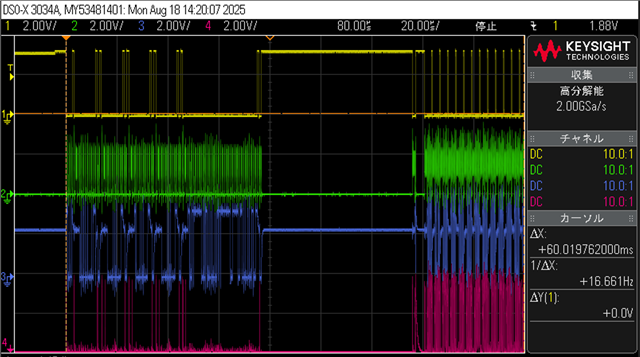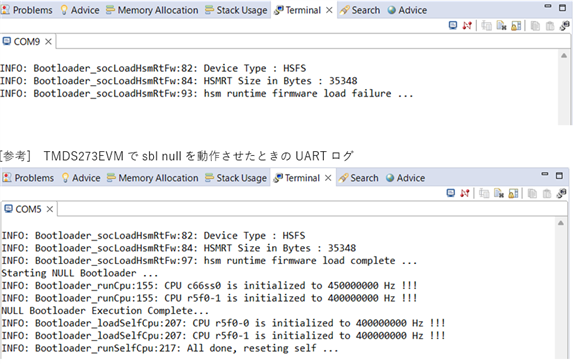Other Parts Discussed in Thread: TMDS273EVM, UNIFLASH, SYSCONFIG
Tool/software:
Hi All,
Unable to boot with Flash Boot.
The current situation is as follows.
① Board verification
・Wrote the LED flashing program in No Boot Mode and confirmed that the LED flashes normally.
・Since we were able to read the Flash SFDP Table using QSPI Flash Diag,
we believe that there are no hardware (circuit diagram) issues.

② Functionality verification using the TMDS273EVM
• Conducted functionality verification of the Custom Flash Device using an EVM that is confirmed to function properly.
• First, verified functionality using the SBL and Flash writer provided by TI's SDK → Confirmed that Flash Boot is possible.
• Next, following the procedure in "AM273x MCU+ SDK 09.02.00” Adding Support For a Custom Flash Device”
→ Flash boot failed.
③ Flash
Tested ISSI IS25LP064D and Macronix MX25L6445EZNI-10G,
but neither could perform Flash Boot.
However, when observing the QSPI (CS, CLK, SO, SI) with an oscilloscope,
it appears that some communication is taking place, and it seems to be reading the image from the Flash.
When comparing the QSPI waveforms from a successful Flash Boot using the TMDS273EVM
and the waveforms from a failed Flash Boot on our own board, they appear to be the same.
First, regarding the inability to perform Flash Boot using the Custom Flash Device with the TI EVM mentioned in ②, it seems there may be detailed settings not explained in the SDK user manual.
Could you provide support for this?
(I previously posted the above question but did not receive the expected response.)
Next, if the image is read from Flash but does not boot, what possible causes could there be?
Best Regards,
Ito



